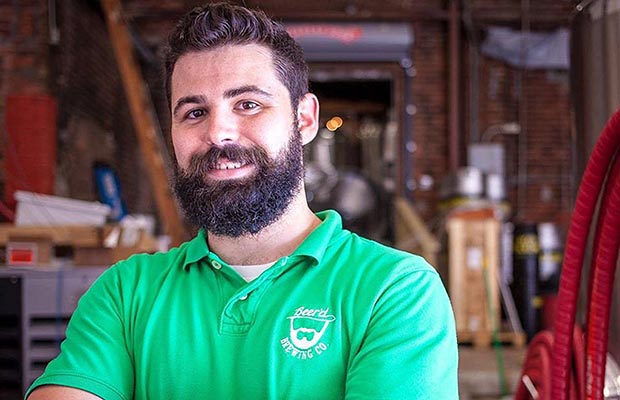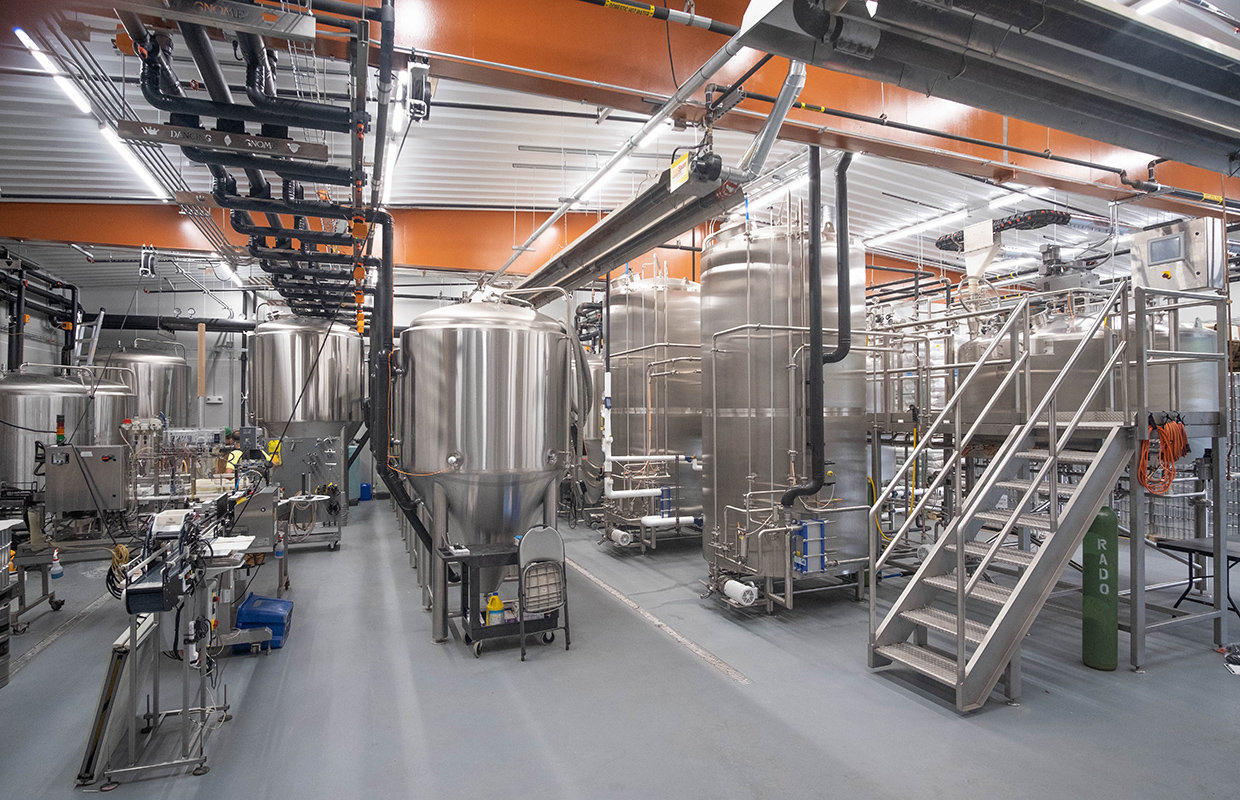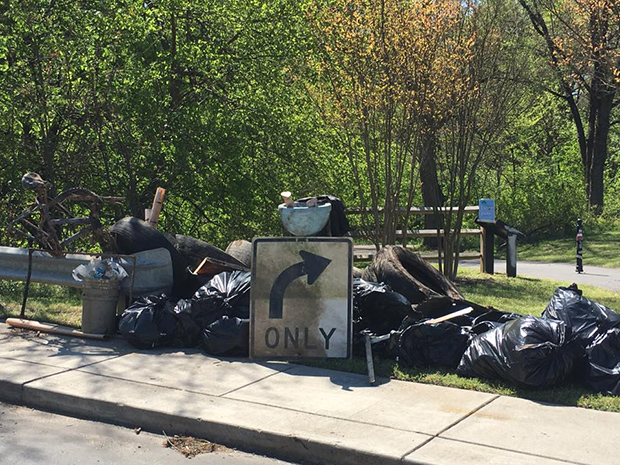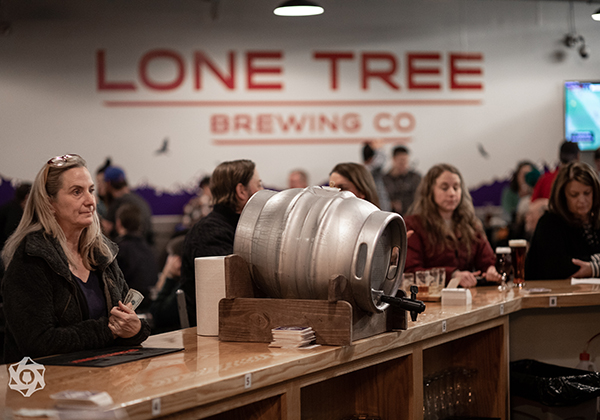
This is a part of a continuing series of Q&As with members of the brewing community from across the U.S.
Brewer Magazine will share business and personal insights from Brewmasters, Head Brewers, Brewing Managers, Sales Directors, QCQA Managers and others each weekend to help you get to know each other better in the industry and learn more to better develop your own brand.
Aaren Simoncini, owner, The Beer’d Brewing Company — Stonington, Connecticut
BREWER: How do you feel your job has had to adapt in the beer market compared to a few years ago?
SIMONCINI: Our brewery has been open for seven years at this point. It’s been a very interesting ride. As time has gone on, we’ve grown from a nano brewery producing and selling about 100 barrels in year one via our taproom to a much larger distributing brewery, this year (2019) landing at about 6,500 BBLs. We were established before the New England IPA craze, and before mobile canning made it so easy to get your wares out to the world. As time has passed, one of the major ways we’ve had to adapt to the market compared to a few years ago is the constant need to be innovative. As a self-distributing brewery in Connecticut we’re able to be very nimble when it comes to launching new products. We have two different sized brewhouses with a myriad of different cellar sizes. We operate our own canning line and also utilize a mobile canning operation for larger more regular runs. The combination of these three things allows us to conceptualize and move to sales with new brands very rapidly. We’re also able to scale a rollout nicely, gauging public interest via smaller batch can runs via our tasting room before bringing that line out to full distribution. Don’t get me wrong, it’s still important to package a few hundred cases of Dog’s & Boats DIPA every Monday, but adapting to the consumers need for new and interesting has been the biggest change for us.
BREWER: Who is your mentor in the industry and why? What have you learned from them?
SIMONCINI: I honestly don’t have a singular answer for this. Our industry is so collaborative, and so many conversations happen over a beer or a happenstance meeting at an event it almost feels like the industry at large is my mentor. Talking shop is a passion of mine, and so many industry peers have become friends that at this point it just seems like I learn by osmosis. I wish I could say I saw an individual peer as much as I’d like to, but it’s a busy world out there and I don’t get out nearly as much as I’d like to visit friends. One way we can turn a casual visit into work is through collaboration. This has always been a great way to get outside of our box and see things in a different light or maybe from a different angle. It’s not until you’re introduced to a new technique, ingredient or piece of equipment that you realize you’ve been missing out or doing it the hard way for so long. These are great two way learning experiences for everyone on the teams involved.
BREWER: Can you share a success story that you are proud of in your job or maybe a story of how you learned from a situation that has altered your thoughts on how you do your job now?
SIMONCINI: My job has completely changed since we opened back in 2012. As a nano producing only 100 BBLs of beer in year one my wife and myself had to physically do everything. Licensing, compliance, accounting, procurement, brewing, cleaning, selling to name a very small portion of the tasks on our plate. Luckily we were able to divide and conquer which ultimately led to us being able to expand. Today our team is 30 strong, and that means that while I get to choose the things I enjoy doing the most, I no longer get to be as immersed in every aspect of our business. This has been an interesting prospect for both of us. I think that the fact that we built a solid team that we can trust to do the job just as well as ourselves has certainly been a success for us.
BREWER: Can you touch on something your brewery has added lately that’s unique or making your business more successful (it could be equipment, technology or people)?
SIMONCINI: It shouldn’t come as a surprise to anyone in the industry that competition is growing more stiff by the day. When we started our brewery in Connecticut there were only about 11 breweries. Today there are over 100! From the beginning, we’ve always strived to provide the best quality beer to our consumers that we could. When finances are tight it’s not always the easiest thing because the choice is raw goods for more beer, or lab equipment for better beer. I think we’ve chosen a path that has allowed us to grow both in output but also in quality control and assurance. First it’s the microscope, then it’s the DO meter and the list continues. Our list reached the point where we filled a dedicated QA/QC position this year. We used to all share in this capacity, and it’s still a team effort, but it was a huge goal of ours to get to the point where we could have a team member solely focused on this practice. We think in the long run, consistent quality beer will set us apart in a world filled with novelty and consumer uncertainty, and filling the QA/QC position is a way for us to commit to this goal.
BREWER: If you had one business strategy that you could implement to better the brewing industry, what would it be?
SIMONCINI: This may come across the wrong way, but often owning a brewery is very romanticized. I absolutely buy into this as well, but there needs to be a strong understanding that this is a highly regulated industry and our breweries need to be run within that structure. I get it when you’re small and only sell out of your own taproom it feels like there is less risk skirting the regulatory corners, but it makes the industry as a whole look bad. I’m certainly not going to point any fingers, but I think as a whole the industry could use some more knowledge about regulatory practices that we’re subject to, and should perhaps look within and conduct a regulatory self audit. As an organization that went to bat trying to change a specific state law last year, we were met with accusations that brewers act as if it’s the Wild West and that we’re all illegally selling kegs out our back doors. The first step in participating in regulatory reform is making sure what’s within your own control is bulletproof, and I think that the industry at large could improve upon this.




Be the first to comment